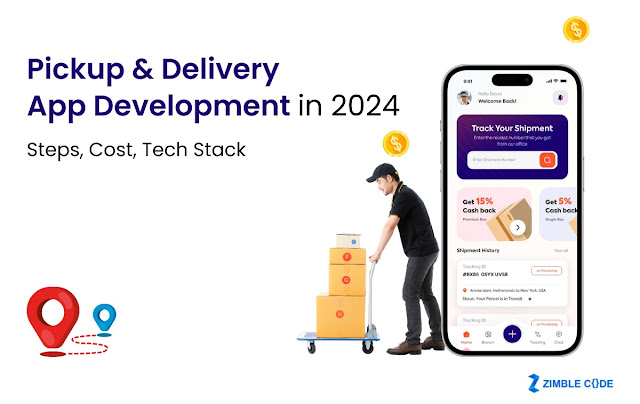What’s New in Node Js 18?
One of the most popular frameworks for creating applications is Node Js.
Node Js is an open-source JavaScript runtime environment. It is used specifically for back-end development. Node Js 18 was published on April 19, 2022, replacing Node Js 17, which was the previous version. One of Node Js 18’s most notable improvements is its improved JavaScript V8 engine 10.1, which by default supports Global fetch.
For the first six months following its release, Node Js 18 will function as the current release. However, in October 2022, a fresh version will come up as the transition into the Long Term Support (LTS) version. This LTS release will be branded as Hydrogen after it becomes LTS. Support for Node Js 18 will last until April 2025. An LTS version will primarily receive security updates and bug fixes once it enters maintenance mode. It usually happens at least two years after release.
This blog post will provide you with all the details you need to know about Node Js 18, its features, and many more.
What is so special about Node v18?
According to Node.JS App Developers in Victoria, here are the new features of Node v18:
V8 Engine Upgrade in Node.js 18
The JavaScript runtime that Google created for Chrome and that Node.js uses to perform JavaScript is called the V8 engine. Any modifications to the way Node.js uses JavaScript have to go through the V8 engine.
The Array functions findLast and findLastIndex are now accessible in Node.js thanks to V8’s upgrading to version 10.1. These techniques return the final element of an array that has been filtered or the index of the last element.
Array.find The only difference between last and Array.find is that last starts at the end of the array and iterates over it backward. Instead of returning the actual item, Array.findLastIndex just returns the item’s index.
Both of these methods accept an argument of a higher-order function. You can call it on each element of the list and then return from the function call when the function is defined as true. Minor performance enhancements are also included in the 10.1 version of the V8 engine. You can learn about it in the upcoming release on the V8 project blog.
Node.js 18 Has A Built-in Test Runner
Since Node.js has always contained the assert library, doing basic tests without a third-party tool is rather simple. However, effective test suites expand fast. Further, today’s majority of projects rely on test-runner libraries like Jest, Mocha, Jasmine, or Ava.
These libraries facilitate the visualization of test results. The collection of coverage information, and the simplification of setup and takedown. Version 18 of Node.js includes the node:test module, which offers a lot of functionality for which one of these modules was previously required. Subtests, test skipping, constrained test runs, and callback tests are supported by the built-in test runner.
New Browser-compatible APIs in Node.js 18
One of Node.js 18’s most important updates is the addition of widely used browser APIs like fetch and Streams. In the browser, fetch substituted a versatile, succinct HTTP client for the clumsy XMLHttpRequest. Node.js Development Company may handle data that is received from or supplied to a network incrementally using the Streams API.
It is essential to remember that in Node.js 18, these APIs are still regarded as experimental. Considering that breaking API changes are possible, it would be a good idea to avoid using them in mission-critical applications for the time being.
Node.js Now Supports Fetch API
By integrating fetch support into Node.js, Node.js Development Company can send succinct HTTP queries without needing to:
- Unauthorized libraries such as Axios or node-fetch expose an API roughly equivalent to the new built-in global.
- Using Node applications that depend on the more complex HTTP and HTTPS libraries to send requests.
The currently available http and https packages are extremely adaptable and provide cutting-edge features. Writing Node.js code will seem more intuitive to developers used to writing JavaScript for the browser since the get global function is far more condensed. Additionally, it is simpler to build code that works in both contexts because Node.js and contemporary browsers now share this API.
For Node.JS app developers used to recent language features, this version is noticeably shorter and more familiar. The code reads synchronously from top to bottom, errors are raised and handled, and I/O operations return promises.
Support for Streams API
The Streams API allows the user to handle data progressively before a whole object loads in memory. It broadly specifies a set of interfaces like ReadableStream and WritableStream. As the body attribute of a fetch answer is a ReadableStream, the Streams API is essentially a requirement for fetch compatibility.
Think of multimedia applications or other real-time apps as examples of applications where we want to use a lot of data but don’t require the complete quantity to do so. Although Node.js has always supported certain use cases, creating these apps could be simpler now because the same high-level APIs are accessible in both client and server contexts.
Wrapping Up!
If you hire Node.JS app developers in Victoria, they will work at all stages of a web application’s architecture without shifting languages. With Node.js 18’s new capabilities can capitalize on this advantage and further close the gap between JavaScript on the server and JavaScript in the browser.
It’s heartening to see that gap continuing to decrease given the rising prominence of programs. However, that must function in both contexts, such as server-side rendered webpages.
Article Resource - https://zimblecode.com/whats-new-in-node-js-18/




Comments
Post a Comment